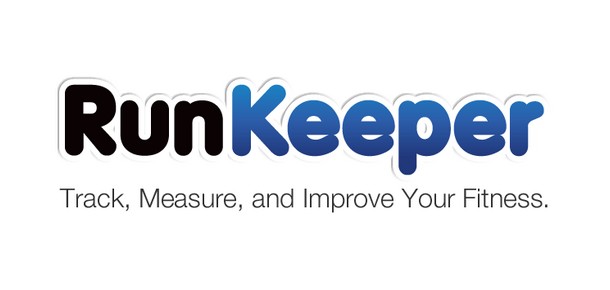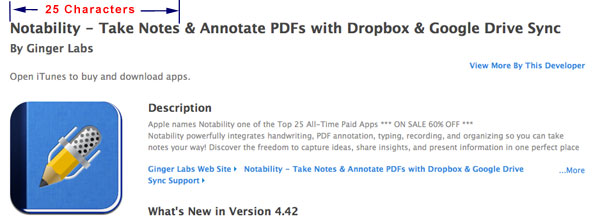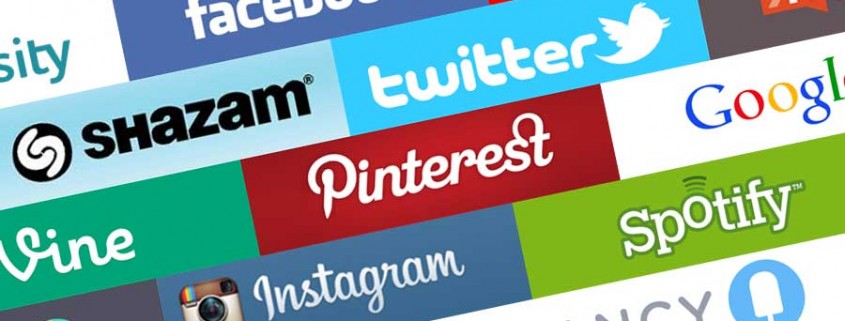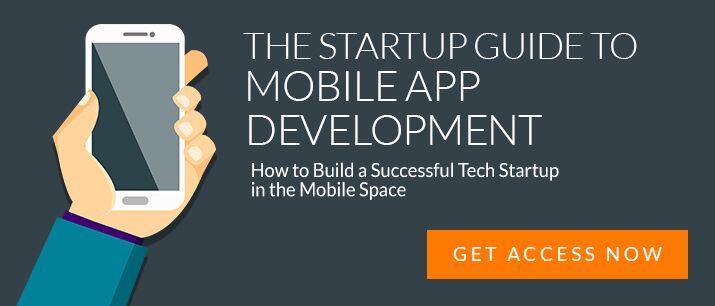How to Pick the Perfect App Name
This post is the first in a 5 part series on App Store Optimisation (ASO), which will show you proven strategies to make your app rank higher in app store search.
Open the links in a new tab to continue reading after this post!
Part 2: How To Rank #1 On The App Store
Part 3: How To Hack App Store Search
Part 4: 8 App Preview Videos You Can’t Stop Watching
Part 5: Infographic: 9 App Visibility Tactics You Can Implement Today
Picking an app name can be hard…
In fact, one of my clients was so caught up on the app name he literally said “…I never even had this much trouble picking the names of my 3 kids!”. < –true story
In this article I aim to demystify the process of ‘How to Pick the Perfect App Name’.
I’m going to break down the 6 factors of a good app name. Most great app names cover 2-3 off these 6 factors.
We’ll also explore 3 ideas that work and 3 ideas that don’t work when picking an app name. Excited? Good.
Let’s start with:
5 factors of a good app name
I’m gonna let you in on a little secret (lean in). There is no such thing as a perfect app name… confused?
Let me clarify:
There are good app names. And there are bad app names.
BUT it’s the brand and feeling that people associate with an app name that gives it meaning.
And it’s that meaning that makes it awesome.
Think about Facebook. What do you feel? You probably associate Facebook with your friends – go figure!
But without that association, Facebook means nothing. And therefore it’s just a name. It’s a good name…but it’s still just a name.
However, those who don’t like Facebook – because of the incessant visual noise and intrusive advertisements in your news feed – you probably think it’s a pretty stupid name.
Now think about Angry Birds. What do you feel?
You probably think about bright colourful birds catapulted into green pigs. It’s fun. And entertaining. You might even say that you associate a feeling of being entertained to Angry Birds. But remove that feeling and the name is actually kind of dumb.
Angry Birds – Birds that are Angry?
Here’s the thing…
I mentioned there is no such thing as a perfect app name. There are only good app names and bad app names.
You need to pick a good app name and build your brand around it. In other words, pick a name, choose how you want people to feel about it and work towards that.
I’ll touch on that soon…
Anyway, here are the 5 factors of a GOOD app name:
1. Make the app name flow off your tongue

Choose a name that flows off your tongue when you say it. F
or example, let’s say your application is a family-oriented calendar/note/messaging system.
It supports better communication within families and lets members collaborate and organise their weekly schedule (feel free to steal my idea)
A few suitable names could be:
- Family Plan
- Family Net
- Family Hub
- Pack Hub
The opposite of a name that flows of your tongue is: The Family Calendar Application…not very cool, is it?
I hope this makes sense to you, because this is really important. The easier it is to say and remember, the easier it is for people to tell their friends about it.
2. What’s trending right now?

There are always trends. Ride trends to stay in the groove.
Look at apps like Shopify. They’re riding the ‘-ify’ trend (Spotify, Vizify, Gamify)… there’s heaps of them. In fact, here’s the full list of apps ending with ‘ify‘).
Admittedly, you want to start riding trends when they’re fresh. Not when 100 other apps have already jumped on the name-wagon.
Needless to say…it’s too late for ‘-ify’.
What’s fresh right now?
- Putting an ‘-i’ at the end of the name instead of a ‘-y’ or ‘-ey’. E.g. Curbi, Foogi, Bubbli.
- Dropping syllables in the name. E.g. Vouchr, Directr.
- Putting a ‘y’ at the end of the name. E.g. Findery, Jelly.
- Doubling up the syllables. E.g. Taasky.
- Replacing a syllable with one that is pronounced the same. E.g. Lyft.
- Make something up. E.g. Fonta, Asana, Shazam.
Example: Using my app idea as an example I’ll list a few names from the trends above-
- Famili
- Fmly
- Planly
- Faamily
- Familee
- Famly
Is this too easy for you? Do you NEED a challenge? Read #4 for the really tricky part…
3. How branding affects your app name

Do you know what a brand is? I’ll give you a hint: IT’S NOT A LOGO…
A brand is the feeling associated with a product, service or an individual. It’s the way the company wants to be perceived by suppliers, staff members and the public.
- McDonald’s is associated with family.
- Apple is associated with style, the cutting edge and innovation.
- Coca Cola is associated with having fun with friends.
So, what does your brand stand for?
Don’t tell me that your application is just an app. You’re a business and your app is the medium for delivering your service!
In order to build a business that thrives you need to consider how your business makes its target audience feel.
Do you see where I’m going with this? Your application name needs to stem from a brand.
The brand is the underlying meaning of your business. For instance, Buzinga means ‘To explode with Creativity’. That’s our brand.
We help companies and startups engage their target audience in creative ways through the mobile space…
Your brand has meaning as well. But what is that meaning? And what’s the best way to describe it? Now think of a name for it. One word…1 to 2 syllables…go.
See also: 10 Steps To Creating An Unforgettable App Brand
4. Make your app name keyword rich

20% of app downloads are from apps that have been found on the App Store via their keyword based search engine. Albeit somewhat convoluted and dysfunctional.
And your title is the most authoritative meta-data (search data) that the App Store search engine has to go by. Therefore you should always aim to include your keyword in the title.
Like this:
‘Famly | A shared family calendar’
The keywords are ‘Family’ + ‘Calendar’ + ‘Shared’.
Even big name app brands use this hack, because app store optimisation is so important for getting found on the app store.
For example:
- WhatsApp Messenger
- Pandora Radio
- TripAdvisor Hotels Flights Restaurants
It really doesn’t need to be any fancier than that. But take your time finding the right keywords though.
Check out How To Rank #1 On The App Store for how to be strategic with your descriptive app keywords.
5. ‘Descriptify’ your app name < –I made that word up…you can use it if you want.

Your app name should in some way, shape or form describe the key function or value to the end user.
Examples:
- Shopify lets build your own online shop with Spotify. Simple.
- HubSpot is a hub for driving and measuring inbound marketing campaigns.
- Runkeeper tracks your progress as an athlete.
- Famly (my made up example) connects you with your family members in a private ‘cloud-based’ intranet.
A descriptive name lets your users know what your application does BEFORE they download it.
This is important in order to decrease the bounce rate (people who download your app, open it once and never open it again) and increase the value of your user base.
A name like Family Plan or Family Hub, or even FamHub is quite descriptive.
6. Mixing Words

Grab a few descriptive words about your app idea and mix them together in a creative way. Instagram did exactly that.
Using my made up app as an example I’ll grab a few of the key words that describe it and then mix them up creatively:
Family, plan, schedule, messaging/SMS, Intranet…
Mix-it-up:
- Planly (Plan + Family)
- Scheduly (Schedule + Family
- FamSM (SMS + family)
- Familinet (Family + Intranet)
Get the idea?
Next up…
These are things you need to be mindful of when picking an app name. I’ve listed 3 ideas that work well when picking an app name…and 3 ideas that DON’T work well:
What’s working right now
- Length of the name – In essence: “the shorter the sweeter”. Why? Two reasons straight off the top of my head – 1) You can only fit 25 beneath the icon when the app is displayed on iPhone; 2) It’s easier to remember shorter names.

- Make it distinct – Don’t be another ‘Flappy’. Be unique. Use a name that distinguishes you from other apps on the App Store. Be a leader.
- Make it relevant – Make sure that your app name is relevant to the key functionality and value of the app. This helps your users distinguish whether your application is something they’re interested in prior to downloading it. It also makes it easier to remember the name! This isn’t an absolute must. I’ve seen other apps that DON’T do this that have done well. But it’s definitely an idea that works well.
What doesn’t work (and probably never did)
- Use of special characters – Using a hyphen, slash, full stop, or any other special character is completely unnecessary. The only time I would suggest using a special character is in the app title on the App Store to separate the actual app name from the short description in the title area (see point 4. Keyword Rich above).
- Similarity with popular apps – The success of apps like Talking Tom has spawned off an entirely new breed of ‘Talking _fill in the blank_’. Talking Santa, Talking Harry, etc. These names don’t generally lend credibility to the app but gives an immediate impression of a rip-off.
- Get wild or playful – Beware of using profanity, sexually explicit or offensive words to create your app title. While many consider breaking away from the standard names to be a way of grabbing eyeballs, too much of it will create a negative impression of the app and the team behind it.
Hope this helps! These are some of the ideas and tactics that we’ve used in house to help our customers create cool names like Slidr (pronounced ‘Slider’), PRESi, Squizzy, Zombie Cat Madness, and so on…
NOTE – another important consideration when picking an app name:
Before committing to an app name you need to check that it hasn’t already been taken. I suggest you do the following:
- Search on the App Store for the exact name you’re going for. If nothing turns up, revert to the next point (2).
- Search Google for the exact name you’re going for followed by ‘app’. It should look like this: ‘_fill in app name_ app’
Where to go next…
Part 2: How To Rank #1 On The App Store
Latest posts by Logan Merrick (see all)
- Ep 18: Collective Campus’ CEO on Intrapreneurship and Corporate Innovation - December 20, 2016
- 50 User Engagement Strategies For Planning Memorable Mobile Experiences - December 19, 2016
- Latest Data: App Monetisation Trends And Drivers 2015-2020 - November 25, 2016




